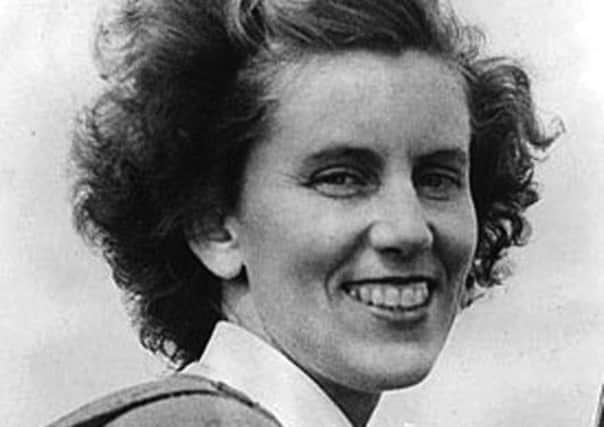Lettice Curtis


The special bond with the museum originated from the fact that she delivered Halifax HR792 from Radlett to 58 Squadron, Coastal Command, which during service suffered an accident at Stornoway, Scotland, and subsequently became the fuselage section on which the museum’s world-renowned Halifax reconstruction was based.
She also donated her ATA uniform to the museum, a very rare item indeed.
Advertisement
Hide AdAdvertisement
Hide AdBorn in Devon in 1916, Lettice Curtis was educated at Benenden School and St Hilda’s College, Oxford, where she studied mathematics and, as a keen sportswoman, became captain of the University lawn tennis and fencing teams.
She learned to fly at Yapton Flying Club in 1937 and it is no surprise that she was one of the first women to join the newly formed Air Transport Auxiliary, initially delivering early training aircraft such as the Tiger Moth and Harvard.
She trained on all types and became the first woman to deliver a four-engine bomber, a Lancaster. She delivered 222 Handley Page Halifax aircraft, 109 Short Stirling bombers and 150 De Havilland Mosquitos. Her work rate was phenomenal, as she flew 13 days on, two days off, for 62 consecutive months from July 1940 to September 1945, delivering all weathers, never daunted.
She served with the ATA until the organisation was disbanded in November 1945.
Advertisement
Hide AdAdvertisement
Hide AdEarlier, she had been introduced to US First Lady Eleanor Roosevelt during the President’s visit to White Waltham Airfield, Maidenhead, where she was acknowledged as being the first woman to fly a four engine heavy bomber. Coincidentally, Eleanor was Lettice Curtis’s first forename. Her final rank was First Officer, and she had delivered over 400 aircraft four engine aircraft alone and handled over 50 different types.
Her career continued as a technician and test observer at the A&AEE aircraft test centre at Boscombe Down, then she worked with Fairey Aviation as senior flight development engineer, alongside Sir Peter Twiss. Her love of flying continued and she participated in British Air Racing, and, astonishingly, qualified to fly helicopters at the age of 76 in October 1992, but voluntarily grounded herself in 1995.
Museum director Ian Reed said: “Having met her on several occasions there is no doubt that the aviation world has lost a true character, both inspiring, as well as a formidable pilot.
“She knew and mixed with many of the legends, such as Yorkshire-born Amy Johnson, and her service was without doubt an immense contribution to Britain’s war effort.
“She was amongst the most courageous of pilots and the museum and memorial is very proud to have had a long association with Lettice and wish her family our deepest condolences.”